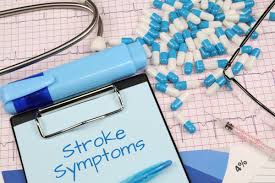A stroke occurs when the blood supply to the brain is interrupted or reduced, causing the affected cells to lose oxygen and nutrients. It is fundamental to identify the early warning signs of a stroke to reduce potential complications and improve outcomes. Acting quickly can be key, as timely intervention may limit damage and support recovery. Let’s look at the common signs of stroke to help you recognize them.
Numbness and Weakness
One of the most common indicators of a potential stroke is sudden numbness or weakness, particularly on one side of the body. This can affect the face, arms, or legs. You may notice one side of the face drooping or an inability to lift both arms evenly. Weakness in one leg could also result in difficulty walking or standing. These symptoms are often sudden and should not be ignored. Make sure to observe any physical strength or movement asymmetry, as it can be a clear indicator of an underlying issue.
Confusion and Trouble Speaking
Stroke may also present itself as sudden confusion or difficulties with speech. Individuals might find it challenging to form coherent sentences, slur their words, or have trouble understanding what is being said to them. Someone experiencing a stroke may respond in fragmented or nonsensical phrases. Alternatively, they may show signs of cognitive delay when asked simple questions. Language impairment, whether expressive or receptive, often signals a disruption in brain function and should prompt immediate attention.
Vision Problems
Another key symptom to recognize is sudden trouble seeing in one or both eyes. This may include blurry vision, double vision, or even temporary vision loss. Changes to vision might appear without any preceding discomfort or warning. An individual may report that their field of vision has narrowed or that one eye seems significantly impaired compared to the other. Observing issues with vision during a conversation or daily activities can help identify this symptom.
Loss of Balance and Coordination
Sudden dizziness, loss of balance, or coordination challenges are also common during a stroke. This can result in difficulty walking, frequent stumbling, or an inability to maintain posture. An individual may veer to one side while performing routine tasks or struggle to maintain stability when seated or standing still. It is helpful to pay attention to unanticipated physical instability and seek immediate assistance if this occurs.
Why Acting Fast is Key
When it comes to stroke, the concept of “time is brain” is a fact. Every minute a stroke goes untreated, millions of brain cells can be lost. Rapid identification and intervention can reduce the risk of long-term injury or disability. Emergency treatments, such as clot-dissolving medications or surgical interventions, are most effective when administered within a specific time window after symptoms start. Acting fast is fundamental in achieving the best possible outcomes.
Schedule a Stroke Evaluation Today
Recognizing these signs can aid early intervention during a stroke. Awareness of sudden numbness, confusion, vision problems, and loss of coordination can support timely action. Be sure to prioritize medical evaluation if you suspect someone is experiencing stroke symptoms. Quick responses contribute to better outcomes and reduce the risk of long-term complications. To learn more or schedule a stroke evaluation, contact a trusted healthcare professional today.
- FREHF – The Revolutionary Future Of Human-Centered Technology!
- Adsy.Pw/Hb3 – Boost Your SEO And Drive More Traffic!
- Fitness Based Vacations By Timeshealthmage.com!
- TimesHealthMag Tips For Improving Sleep Quality – Expert Advice For Better Rest!
- How TimesHealthMage Helps Improve Your Lifestyle Habits!


Leave a Reply